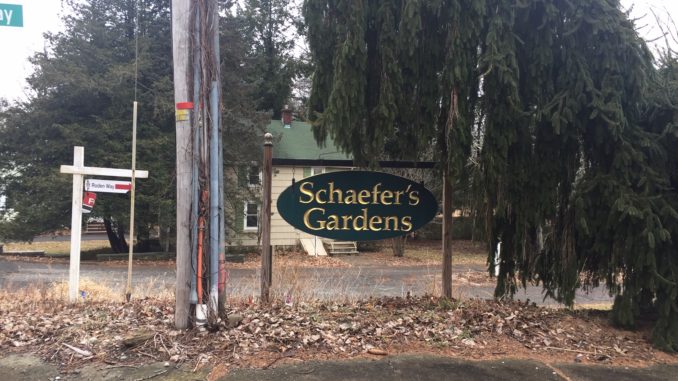
HAWORTH, N.J.—A Superior Court judge officially approved Haworth’s affordable housing settlement plan June 20 with intervenors Fair Share Housing Center and Lakeshore Developers LLC in agreement—saying the plan’s call for 223 affordable units satisfied all criteria and conditions imposed by New Jersey’s Mount Laurel decisions and Fair Share Housing Act.
Over four years of negotiations, with 20 extensions of “immunity” to protect the borough from potential “builder’s remedy” lawsuits from developers looking to construct affordable units, Superior Court Judge Christine Farrington took about an hour to hear from attorneys representing the borough, Fair Share, and Lakeshore Developers LLC, plus brief testimony from two objectors, before ruling in favor of the long-negotiated plan.
‘A realistic opportunity’
Farrington approved the plan as “a realistic opportunity for construction of affordable housing” following brief testimony by Haworth planner Caroline Reiter, who described components of the affordable settlement and how the borough planned to satisfy its “realistic development potential” (RDP) of 28 affordable units.
The judge ordered the borough and intervenors to attend a compliance hearing in approximately four months, with a date to be mutually determined sometime in November by the borough, Fair Share, and an attorney for Lakeshore Developers, LLC, owners of Schaefer’s Gardens.
‘Least-worst solution’
“We worked awful hard at this to balance,” said Mayor Thomas Ference following the judge’s decision. “These are imponderables; there’s no way you can satisfy everything. And every individual would do it differently. You have to find that route. [Borough Attorney] Bob [Regan] likes to say you need to find the least-worst solution. But we worked together and we ended up with a unanimous decision [on the council].”
He said the council worked hard to address residents’ affordable housing concerns, too.
Over the next four months, the borough must develop and adopt a series of new ordinances, in addition to an updated Housing Element and Fair Share Housing Plan ordinance, to address the new requirements of the settlement plan.
These include an accessory apartment ordinance, a new mixed-use retail and residential business zone with up to 12 housing units per acre in the business district; an affordable housing set-aside ordinance for multifamily rental (15 percent) and for-sale (20 percent) units; new zoning for inclusionary developments at Schaefer’s Gardens and Massachusetts Avenue; and a new overlay zoning ordinance for a density increase at White Beeches driving range from six units to eight units per acre.
Plan objectors
Two of five objectors to the plan—Anthony J. Pace and Cynthia Soroka-Dunn—appeared at the fairness hearing to raise concerns about storm runoff from future development.
Pace said he was concerned about increasing runoff in a stream abutting his property fed by Schaefer’s Gardens runoff and Soroka-Dunn said proposed “inclusionary” developments on Massachusetts Avenue and Schaefer’s Gardens may affect what she said were rare or endangered species there.
Ference said they have tried to deal with all residents by addressing concerns or objections to the settlement plan.
He said that Pace could raise concerns about storm runoff during Planning Board hearings on a development proposal and Soroka-Dunn could express concerns about possible wildlife impacts during applicant hearings.
Soroka-Dunn said she had raised similar concerns at the March public forum and noted that the approximate borough-owned 8-acre Massachusetts Avenue property was environmentally sensitive and once slated to be acquired by the state’s Green Acres program but never was.
Other concerns raised in letters to Farrington questioned the impacts from development in town, the role of accessory apartments and the environmental impacts from developing on both Schaefer’s Gardens and Massachusetts Avenue.
Settlement plan explained
Reiter said the RDP of 28 units was determined by a calculation of how much land existed for future development, following a vacant land adjustment and elimination of environmentally-constrained property.
The agreement includes an inclusionary development by Lakeshore Developers LLC, which will construct a 41-unit multifamily complex on the 5.5-acre Schaefer’s Gardens site with nine affordable units.
The second proposed development is a 35-unit complex on Massachusetts Avenue with 21 market-rate units as well as 14 affordable units that include eight family rentals, two age-restricted units, and four one-bedroom supportive housing units.
‘Accessory apartments’
Also, an “accessory apartment program” of affordable rental units is included for properties that front Schraalenburgh Road and Hardenburgh Avenue.
Two units will accommodate very low income residents, three for low income and five for moderate income residents, notes the plan. Income thresholds for affordable units are established by the state for six zones statewide. The plan notes the program would create a self-contained residential dwelling within an existing home.
Funding to help implement and subsidize the business district mixed use affordable units and accessory apartment program will be available through the borough’s affordable housing trust fund, which totaled over $355,000 in late February, said the plan.
Massachusetts Avenue
The Massachusetts Avenue project is a collaborative effort with Bergen County United Way and a developer to be determined. It includes development of a memorandum of understanding with them, identification of funding sources, alternative local funding sources in case grant funds are not available, a project schedule, oversight entity, and a legal requirement to begin construction within two years of settlement approval.
Only two of 8 acres at the site would be used for the proposed development, Reiter said.
Other settlement elements include: overlay zoning for affordable unit set-asides in a mixed-use development of up to 12 affordable units per acre in the “D” business district; increased overlay zone density from six units to eight units per acre on White Beeches driving range; and a mandatory set-aside ordinance (15 percent for rental units; 20 percent for market-rate units) in new local development.
Joshua Bauers, Fair Share’s attorney, requested the borough use the 2019 Uniform Housing Affordability Controls (UHAC) income limits for very low income, low income and moderate incomes in marketing local affordable units. He said the income data is adjusted annually. The income data is used in evaluating applicants for the low-income housing when available.
